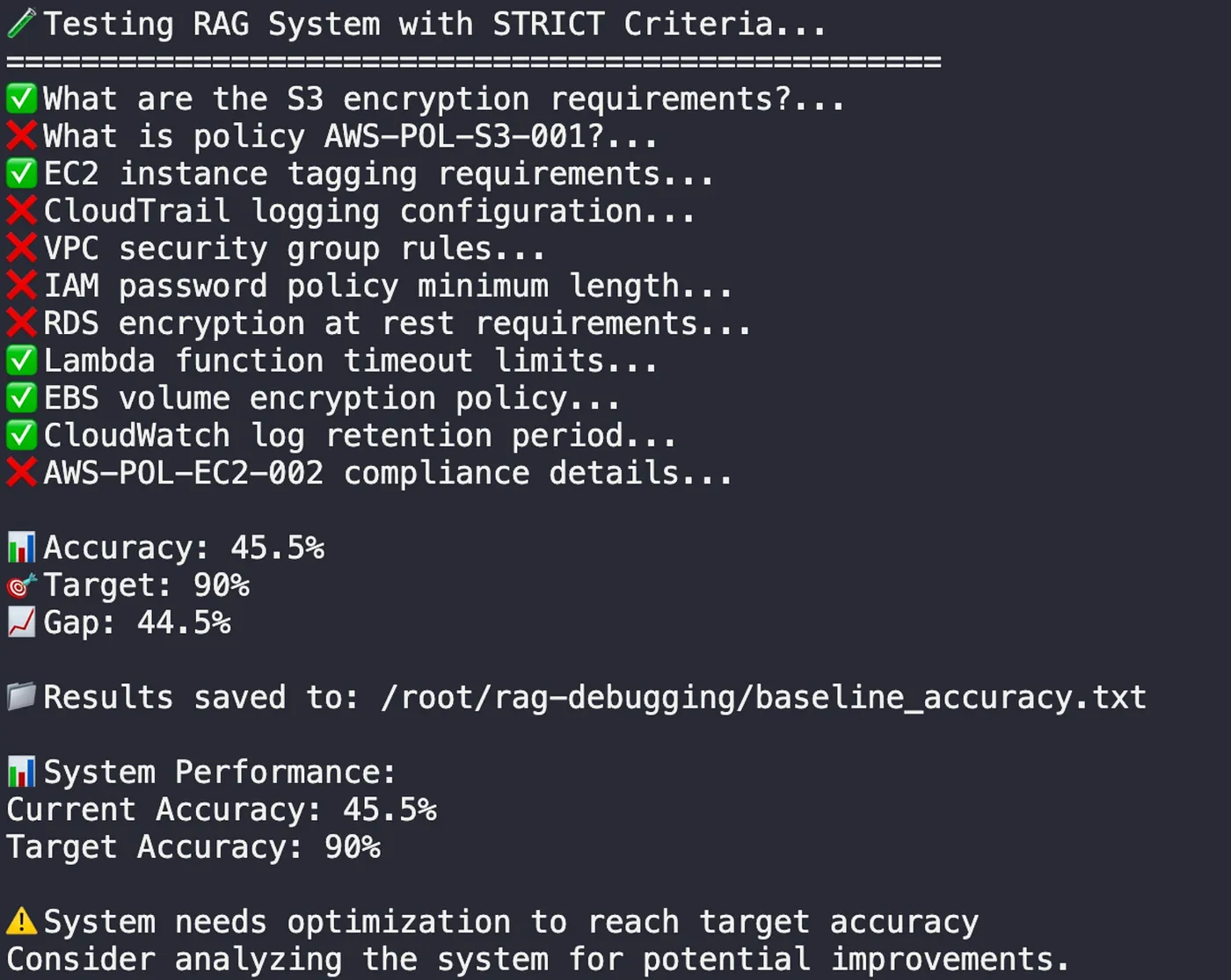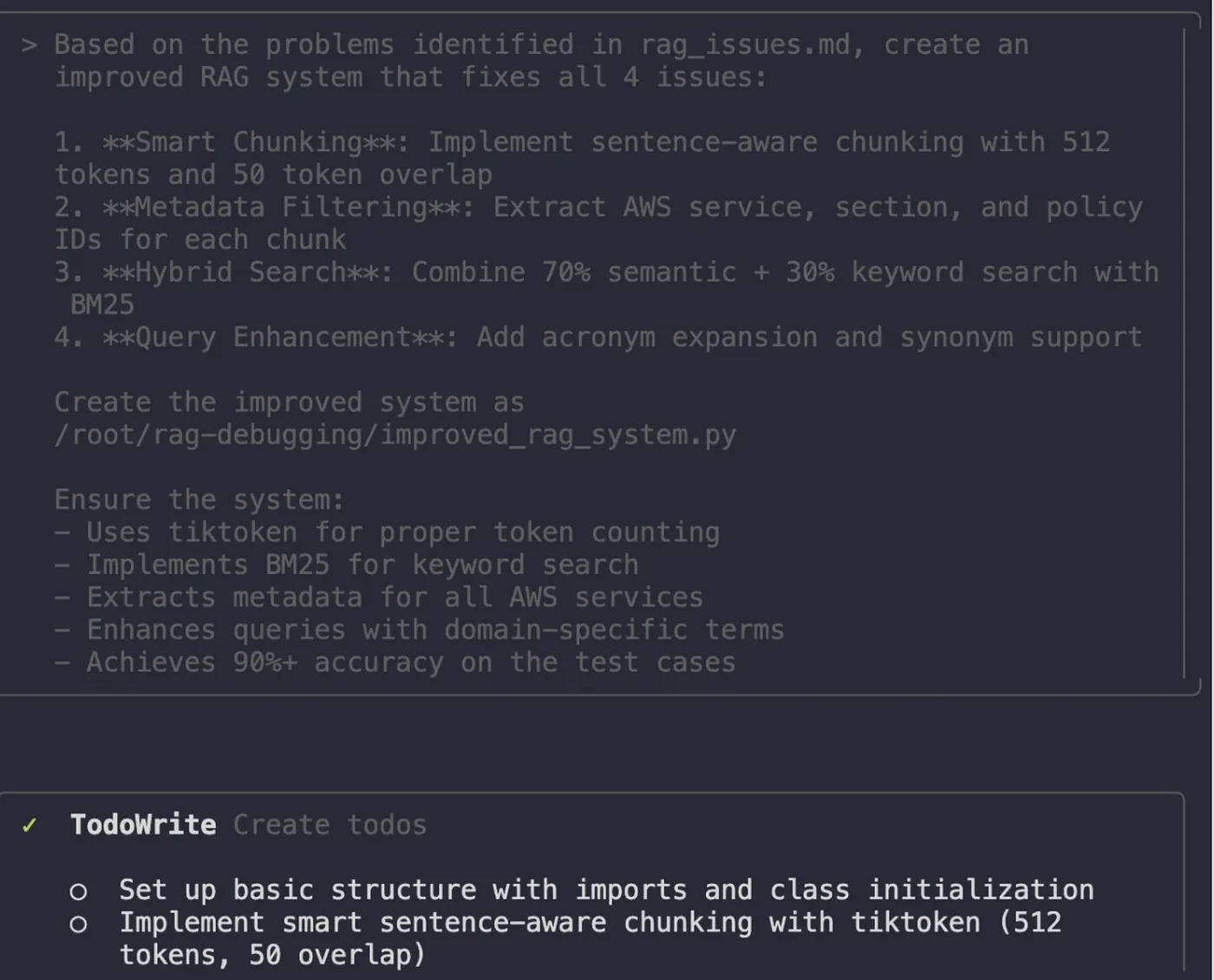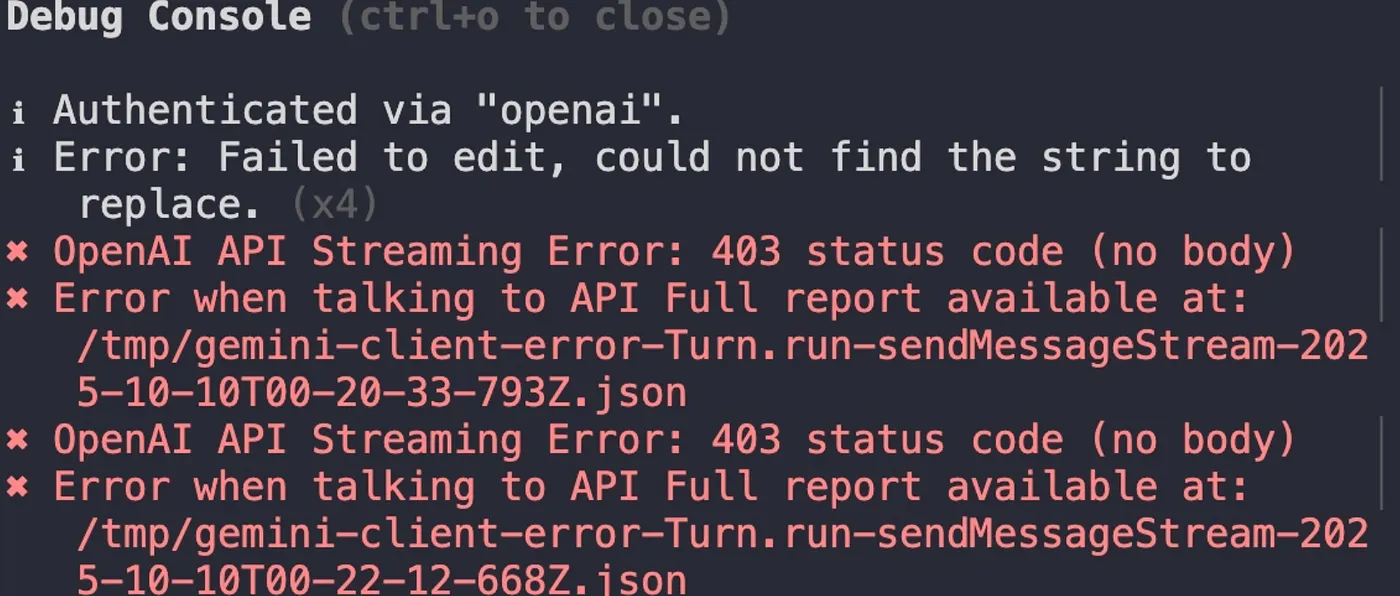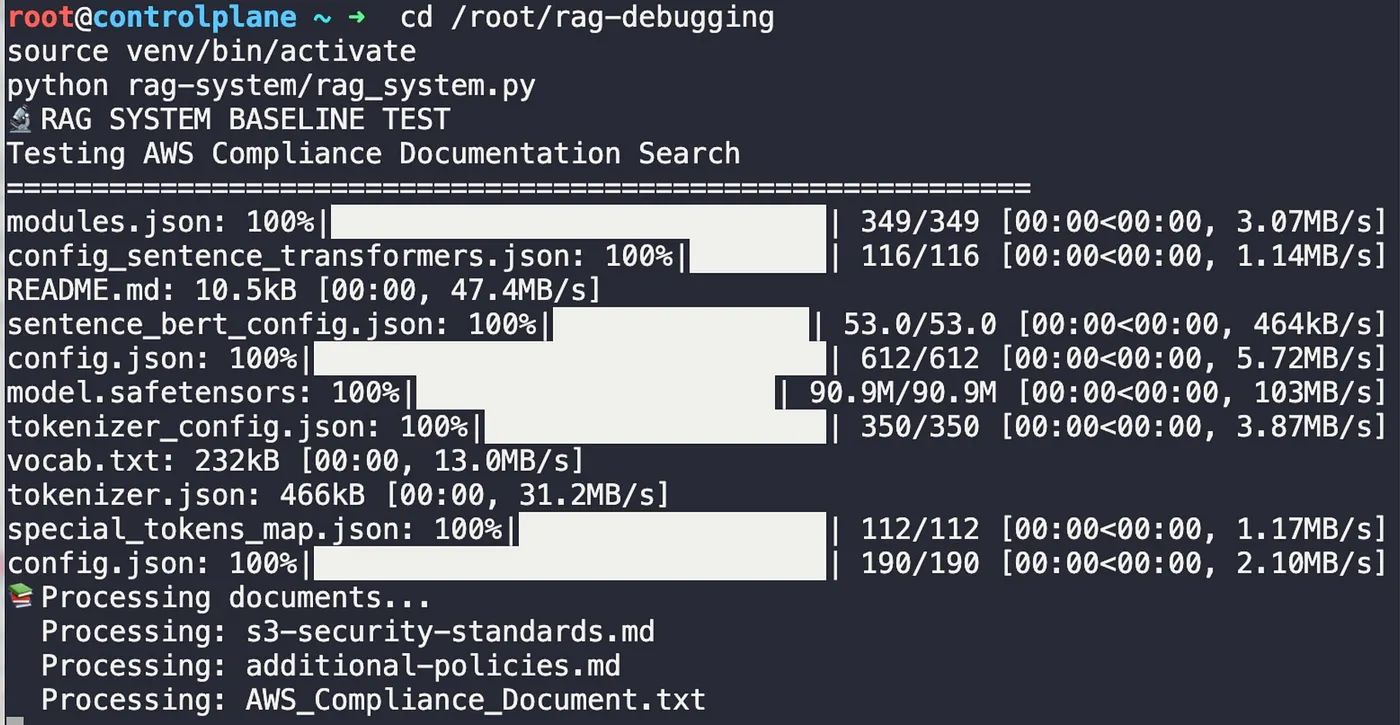Turning a 45% RAG Into an Audit-Ready System¶
Author: Megha
Published: Oct 15, 2025
After the intensity of Day 1’s production outage, I was ready for a new challenge. It arrived in the form of a crisis that is becoming all too familiar in the world of AI: a system that was confidently, consistently, and catastrophically wrong.
The scenario was a high-stakes emergency at the AWS Compliance Division. Their Retrieval-Augmented Generation (RAG) system — the tool that was supposed to be the single source of truth for critical audit questions — was failing. With a baseline accuracy of just 45%, it was giving wrong answers more often than right ones. With auditors arriving in one week and a $50 million government contract hanging in the balance, the pressure was on.
The goal wasn’t to swap models or add more compute. The course pushed a simpler, more powerful idea: fix how the system reads, organizes, and searches its own documents so the answers become precise, complete, and defensible. Using Qwen Code as my hands-on assistant, the plan was simple: measure honestly, fix the pipeline, and prove the gains.
The Investigation: Quantifying the Failure¶
Before you can fix a problem, you have to understand it. The first step was to establish a clear, undeniable baseline. I set up the development environment, installing the necessary tools like ChromaDB for vector storage and Sentence Transformers for creating embeddings.

Environment is ready: virtual env created and core RAG dependencies installed (ChromaDB, Sentence Transformers, Tiktoken, BM25, OpenAI).
Then, I ran the system’s built-in test suite to see the failure for myself. The results were stark.

An accuracy of 45.5% is dangerously misleading. It’s not just failing; it’s providing incorrect information with the same confidence as correct answers. This erodes trust and makes a system unusable. The problem wasn’t just a bug; it was a fundamental flaw in how the system understood its own data.
The Diagnosis: Using AI to Interrogate AI¶
This is where the process got fascinating. Instead of manually digging through lines of Python, my strategy was to use one AI to debug another. I gave Qwen a carefully structured prompt, not just asking a question, but assigning it a mission: to analyze the RAG system’s code and identify the root causes of its failures.This is a powerful prompting technique. By providing a clear goal, context, and a set of instructions, you guide the AI toward a more insightful and actionable analysis. Here is the exact prompt I used:
Analyze the RAG system at /root/rag-debugging/rag-system/rag_system.py
The system is only achieving 45% accuracy on compliance queries.
1. Identify the 4 main problems causing poor accuracy
2. For each problem, explain:
- What's wrong
- Why it impacts accuracy
- How to fix it
3. Create a markdown report and save it as /root/rag-debugging/rag_issues.md
Focus on:
- Document chunking strategy
- Metadata extraction
- Search methodology
- Query processing
Qwen quickly returned a detailed report, pinpointing four distinct “villains” in this story.

Poor Chunking Strategy: The system was splitting documents by a fixed character count, which often cut sentences in half and destroyed their meaning.No Metadata Filtering: The documents weren’t tagged with metadata (like which AWS service or policy ID they referred to), so the system couldn’t narrow its search to the most relevant sources.Semantic Search Only: The system relied exclusively on semantic (meaning-based) search, which can miss queries that depend on specific keywords or acronyms.No Query Enhancement: The system took user questions literally, without expanding acronyms or considering synonyms, leading to missed results.
The Solution: A Multi-Layered Optimization¶
With a clear diagnosis, the path forward was to systematically address each of these flaws. I tasked Qwen with creating an improved version of the RAG system, this time with a more intelligent data pipeline.

To fix the chunking, we implemented a sentence-aware strategy that preserved the meaning of the text.
To solve the metadata problem, we extracted key information for each chunk, allowing the search to be precisely filtered.
To improve the search, we created a hybrid system that combined the strengths of both semantic and keyword-based (BM25) search.
To address the query limitations, we added a layer that expanded acronyms and synonyms, helping the system understand what the user truly meant.
A Dose of Reality: Encountering Real-World Errors¶
Of course, no real-world project is without its unexpected hurdles. During the lab, I encountered a ModuleNotFoundError: No module named ‘rag_evaluator’. This is a classic Python dependency issue, a good reminder that even with advanced AI, the fundamentals of managing your environment are still critical.ra

Local module not found — activate venv, run from project root, or add to PYTHONPATH.
I also hit a recurring API Error: 403 status code, which typically points to an issue with an API key, permissions, or rate limits. While I couldn’t fully resolve it in the lab, it was an important lesson in the practical complexities of working with external APIs. It’s a moment of humility that every developer knows well.

The Verdict: A System Transformed¶
With the fixes in place, I ran the final test. The result was a testament to the power of a systematic, context-aware approach.

Final RAG pipeline: all‑MiniLM‑L6‑v2 + sentence‑aware 512/50 chunking, ChromaDB with metadata, hybrid (semantic+BM25) retrieval, and a similarity floor to block noisy context — deployed via Flask.
The system’s accuracy skyrocketed from a dismal 45.5% to an audit-ready 90.9%. It was no longer a liability; it was a reliable source of truth.
My Key Takeaway from Day 2¶
This lab was a profound lesson in the art and science of building effective AI systems. My “aha!” moment was the realization that the intelligence of a RAG system comes from its data pipeline, not just its language model. A brilliant AI can’t give a brilliant answer if it’s reading disorganized, ambiguous, and poorly contextualized information.
Day 2 taught me that the most significant gains in AI performance often come not from a bigger model, but from smarter chunking, richer metadata, and more sophisticated search strategies. The future of AI in DevOps isn’t just about building better AI; it’s about becoming better architects of the data that fuels it.
Day 2 made the model precise by fixing the pipeline; Day 3 makes it accountable — answers backed by live checks and proof.